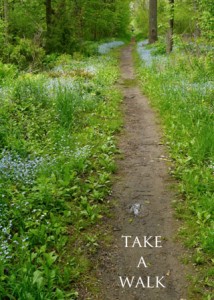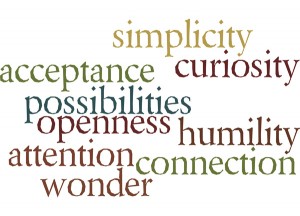** Books mentioned have Amazon affiliate links, meaning I make a few cents if you purchase through my link. I only recommend books that I’ve read.
This summer I’m offering a 6-week version of my original Adventures in Seeing workshop, which focuses on cultivating the nine contemplative habits to your right. It will be more photography-based and a way for you to experience your summer in a brand new way. I’m calling it a summer camp because it will be fun and help you to engage more fully with whatever your summer holds – even on your vacations.
The nine habits will be split into three main areas – taking a pause, focusing our attention, and making the connection. We’ll spend two weeks on each. For the next three weeks, I’ll be writing about each of the three main areas, beginning with taking a pause. In the following sentence, fill in the blank with the word that first comes to mind. Let’s face it – taking a pause seems so ________________.
Was one of these your word?
* impossible
* wasteful
* scary
* unnecessary
* boring
Our culture does not reward taking pauses; it rewards busy-ness and productivity. Yet, pauses are an essential part of creating a work of art, a business idea or a life.
Pauses enhance productivity.
The space in our photographs or the space between the notes in a piece of music are an essential part of the whole but often go unnoticed or are under-valued. Meditation teacher, Tara Brach, speaks of the sacred pause.
What would it be like if, right in the midst of this busyness, we were to consciously take our hands off the controls? What if we were to intentionally stop our mental computations and our rushing around and, for a minute or two, simply pause and notice our inner experience? Learning to pause is the first step in the practice of Radical Acceptance. A pause is a suspension of activity, a time of temporary disengagement when we are no longer moving towards any goal. The pause can occur in the midst of almost any activity and can last for an instant, for hours or for seasons of our life. ~ Tara Brach, The Sacred Pause
Brach recommends taking a pause in any situation, even in conversation. Notice what is happening in your body, heart and mind. Be with it and take your hands off the controls. See the situation as it is with mindfulness and compassion before deciding how to respond.
A pause is a place of opening – a moment to take stock, look deeper, see what’s really happening, welcome it and be open to possibilities.
 We can take intentional pauses (meditation, yoga, a walk), situational pauses (breathe before reacting), and photographic pauses (why this subject).
We can take intentional pauses (meditation, yoga, a walk), situational pauses (breathe before reacting), and photographic pauses (why this subject).
If you don’t already have an intentional practice of pausing, could you add one, at least for the next two weeks? It could be as simple as finding 5 minutes each day to sit in silence and stillness. Focus on your breath. Notice thoughts that come into your consciousness and let them go. That’s all.
If you have a practice of pausing, try to open even further. Where do you need to take more pauses? For example, if you have a co-worker or relative that pushes your buttons, practice pausing in response to them. Don’t react. Just listen. Try to look at the situation through their eyes and then respond accordingly.
“We need to aspire to something very small, to be willing to pause before we react, to be with our experience, to wait and see what arises.” ~ Tracy Cochran, The Mind is Its Own Place
In photography, practice pausing before clicking the shutter. What is your subject? What should and shouldn’t be in the frame?
Further Reading: 10 Lessons from Tara Brach’s Radical Acceptance
Learn more about Adventures in Seeing Summer Camp – starts Monday, July 7th.

Oh, yes – something I definitely need to work on – taking the pause before I shoot. And then, even more importantly, to pause before moving on – to look deeper before going on to the next thing.
I have recently started a yoga class and it is one of the highlights of my week.
Oh, I like that, Brenda, pausing before moving on too.
I love taking pauses. They allow us to gather our thoughts together and then let them all go and feel free afterwards. I find that ten minutes of guided, or silent, meditation is a wonderfully beneficial pause and afterwards I feel calm and relaxed and at rights with the world.
Deep, slow breathing is a very beneficial pause too, especially in difficult situations. I always consciously slow my breathing and relax each part of my body before going to sleep too… all the little troubles of the day just melt away!
I like these words of advice in your text above: “A pause is a place of opening – a moment to take stock, look deeper, see what’s really happening, welcome it and be open to possibilities”.
I love that little path surrounded by green which invites us to take a walk!